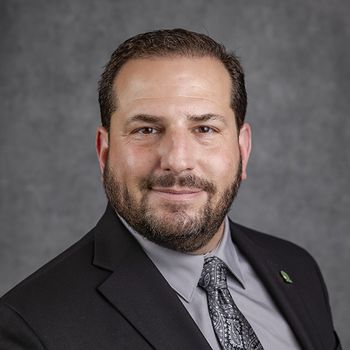
- Medical Economics December 2022
- Volume 99
- Issue 12
Seven ways to ease patient collections in your medical practice
Collecting money from patients is an ongoing challenge that has only worsened with high-deductible health plans.
Collecting money from patients is an ongoing challenge that has only worsened with high-deductible health plans. Traditionally, physicians have accepted this challenge as the status quo, instead choosing to overlook unpaid balances and provide the care that patients need. However, experts say the COVID-19 pandemic has prompted them to rethink this strategy and take a more proactive, business-savvy approach.
Patient collections: A complex issue
“Medical practices are really in a lot of trouble right now — especially independent primary care practices — because of lower reimbursement,” says Rozmin Bapat, CCS-P, CPB, CPC, CPCO, CPMA, president of CodeRite Healthcare Consulting. “A lot of doctors are asking patients to pay up front. Sending statements is a big cost drain on their revenue.”
Still, asking for payment and receiving it are two different things. Asking is, of course, the first step; however, practices also need to address this major barrier: Patients don’t understand their health insurance benefits, including what they owe and, more importantly, why.
“What we’ve seen is that office staff are not trained properly,” says Bapat. “They can’t explain the bill, and it leads to more patient frustration.”
Another layer of complexity? The Wall Street Journal reported earlier this year that certain credit-reporting firms have already started to remove medical debt that consumers pay after their bill goes to collections—debt that can sometimes remain on a credit report for up to seven years. Starting in 2023, some credit-reporting firms will also remove unpaid medical debt of less than $500. Asking patients to pay their medical bill may become more difficult when there are fewer financial consequences.
Patient collection strategies for success
Experts provide the following strategies to ease the burden of patient collections and improve cashflow and revenue:
1. Leverage the No Surprises Act (NSA).
“With the NSA, it’s all about informing people of what their out-of-pocket [cost] will be and then facilitating that collection,” says Krisi Hutson, MBA, senior director of product development at Availity. “Patient education is no longer a ‘nice to have’—it’s a mandate.”
Specifically, medical practices must provide patients with a good faith estimate of cost for the services they will receive, explains Hutson. To do this, they can use fee schedule-based estimator tools within their practice management system or more advanced tools that integrate with multiple payers to provide service-specific benefits and permit providers to create and process mock claims, she adds.
Another option is to pull reports from the billing software or create a spreadsheet of every payer’s allowable (contracted) rate for each service. This will help the front desk collect the most appropriate out-of-pocket dues from the patients, says Bapat.
One aspect of the NSA that independent providers might not know? If they’re a convening provider (i.e., one who orchestrates care with other providers), they may be responsible for providing patients with good faith estimates for each of the providers involved in the patient’s care, says Hutson.
For example, an internist schedules a colonoscopy and then performs that colonoscopy in an outpatient hospital department. In this case, the internist is the convening provider and is thus required to provide the patient with good faith estimates for costs of the following: anesthesia, anesthesiologist, surgical procedure, facility overhead, and postoperative medication.
The good news is that educating patients can make it easier to collect the amount they owe, says Hutson. “The collection of patient responsibility is much less cumbersome when there is clarity and transparency,” she adds.
2. Collect the amount the patient is responsible for as close to the time of service as possible.
“Pre-service or at the point of service is best,” says Hutson. “The farther away from the care, the easier it is for patients to re-prioritize their finances.” Note that doing this may require new workflows such as verifying benefits and eligibility a few days prior to the service as well as on the date of service, she adds.
3. Focus on staff training.
Up-front collections or those taken before service has been provided may be a significant departure from what patients have always known. This is especially the case if a practice’s standard procedure has been to bill the insurance company first and then balance bill the patient, explains Hutson.
“Having a well-trained confident staff is important,” she says. “Put the time into mock training scenarios. Walk them through handling objectives. Make sure they’re comfortable stating what the practice expects of patients.”
For example, when collecting the patient’s financial responsibility at check-in, staff should feel comfortable saying, “We need to collect $25. How would you like to pay — cash, check, or card?” rather than “Are you able to pay your copayment today?”
Staff should also be able to explain concepts such as deductible, copayment, coinsurance, and out-of-pocket maximum to patients, says Bapat. In addition, they should understand how to interpret insurance benefits. For example, a patient might have a deductible that doesn’t apply to an office visit, only to a hospital visit. As a result, the patient may only owe a copayment.
“A lot of physicians don’t invest in this type of training because they feel that the front desk is such a revolving door,” says Bapat. If front desk turnover is problematic, she suggests training the office manager instead so this individual can, in turn, educate new hires. Partnering with a reputable consulting company that understands revenue cycle can also assist in training the staff, she adds.
4. Create a written financial policy (or update your existing one) to include language about up-front payments.
Let patients know that full or partial payment is due at the time of service. Provide the policy to patients at check-in and ask them to sign it, says Bapat. Front staff and physicians themselves should also be prepared to answer questions, such as “Why has the policy changed?” or “What if I’m not prepared to pay today?”
For example, in terms of why the policy has changed, Bapat suggests the following response: “Patients are contractually bound to pay this amount when they sign up for insurance coverage, and now our practice is enforcing it on the front end. We’re asking you to honor it.”
If patients are not willing to pay, Hutson says physicians will need to determine whether they will still be willing to see them. “It will depend on the doctor’s philosophy,” she adds. One option is to simply say, “If you’re not comfortable paying today, we can reschedule your appointment to a time when you’ll have the financial resources to pay.”
As part of this policy, also be sure to provide options for financial assistance, such as loan programs or debt relief services, says Bapat.
5. Use caution with collection agencies. Collection agencies are always an option, but they should be a last resort, advises Hutson. “If you’re going to spend extra dollars, do it on pre-service collection,” she emphasizes. “With collections, you’re going to spend a minimum of 35% to 45% the minute you send it out the door. If you take that money that you would lose on collections and invest in one or two financial counselors, over the course of a few years you’re going to break even — and you’re also going to improve your patient satisfaction scores.”
6. Prepare to issue refunds.
Collecting the amount the patient is responsible for before services are rendered is never an exact science because amounts are always an estimate. This means practices may need to issue refunds if they collect more than what the insurance company deems the patient ultimately owes, says Bapat.
She suggests running a monthly refund report from within the practice management system. Then check to ensure those refunds are legitimate, meaning that a payer didn’t accidentally overpay the claim. Also check to determine whether there are any pending claims to which the refund could be applied.
Once the practice is sure the patient is owed that money, the clock starts ticking in terms of when it must issue that refund, says Bapat. Each state has its own specific requirements for other payers, she adds.
Bapat suggests budgeting a couple thousand dollars a month for refunds. “Believe it or not, creating and maintaining this budget is still cheaper than invoicing patients after services are rendered and following up with unpaid balances,” she adds.
7. Make it easy for patients to pay.
Providing patients with multiple options to pay their bills (e.g., cash, check, credit/debit card, text to pay, or email to pay) can increase the likelihood that patients will follow through with payment, says Bapat.
Looking ahead
Experts agree that now is the time to improve the patient collections process. “Health care organizations need to compensate staff, invest in new technology, and support the services they offer to patients,” says Hutson. “Reimbursement for health care services is essential to sustaining high quality care to the communities they serve.”
Articles in this issue
about 3 years ago
How to select a practice locationabout 3 years ago
Physician estate planning guideabout 3 years ago
Five Signs the Market May Be Heading for a Sustained Uptrendabout 3 years ago
Fallout from the FTX bankruptcy and the future of cryptoabout 3 years ago
Who will provide primary care?about 3 years ago
Why Richard Nixon’s ghost is haunting CMSabout 3 years ago
How physician documentation can combat the opioid crisisabout 3 years ago
Why improving communication can reduce physician burnoutabout 3 years ago
Fixing medical care: The pride of ownershipNewsletter
Stay informed and empowered with Medical Economics enewsletter, delivering expert insights, financial strategies, practice management tips and technology trends — tailored for today’s physicians.















